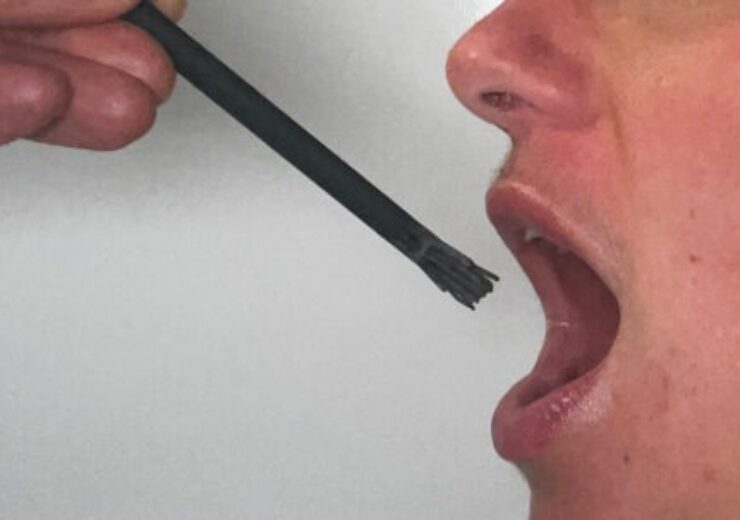The new test, created and patented by Guy Adami and Joel Schwartz of the UIC College of Dentistry, utilises a tiny brush to collect cells from lesions inside the mouth that may be cancerous

The new cancer detection kit needs less than a minute of gentle brushing. (Credit: Lucia Adami)
Researchers at the University of Illinois Chicago (UIC) have invented a new brush biopsy diagnostic kit that enables the early detection of oral cancer without surgery.
The new test, created and patented by Guy Adami and Joel Schwartz of the UIC College of Dentistry, utilises a tiny brush to collect cells from lesions inside the mouth that may be cancerous.
After that, the sample is examined for genetic indicators of oral squamous cell carcinoma, the ninth most common cancer worldwide.
The cancer detection kit needs less than a minute of gentle brushing by a dentist or nurse to collect a sample, thereby improving the existing diagnostic standard of surgical biopsies.
UIC is currently looking for commercialisation partnerships for the new screening technique.
Oral medicine and diagnostic sciences associate professor Adami said: “So many patients get lost; they don’t follow up.
“We’ve tried to keep our focus mainly on early Stage 1 and 2 cancers, so it actually works with the cancers that you want to detect.”
The detection method operates by searching for tiny genetic segments known as microRNAs, which control how genes are expressed. It also worked using epithelial cells, the outermost layer of cells in the mouth of a patient.
Furthermore, the patient then puts the brush in a tube of solution and sends it to a lab for microRNA analysis. The current version of the test is said to provide results to the clinic in days.
Additionally, the brush approach only gathers cells from a single spot where treatment can be targeted if a tumour is discovered, in contrast to blood tests that look broadly for genetic signs of cancer.
Schwartz said: “If you compare what we do, which is site-specific targeting of tissue, to the other tests out there, they don’t have a targeting of where the tumours actually are.
“That makes it harder to start treatment rapidly after detection.”
The test’s creators anticipate that it will make screening simpler, especially for patient populations with a greater incidence of oral squamous cell carcinoma or those who do not receive regular dental care.
Adami and Schwartz said that the technology can help identify different oral disorders based on their distinct microRNA signatures.
